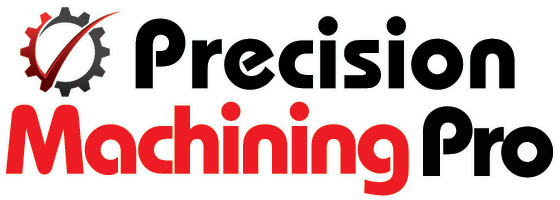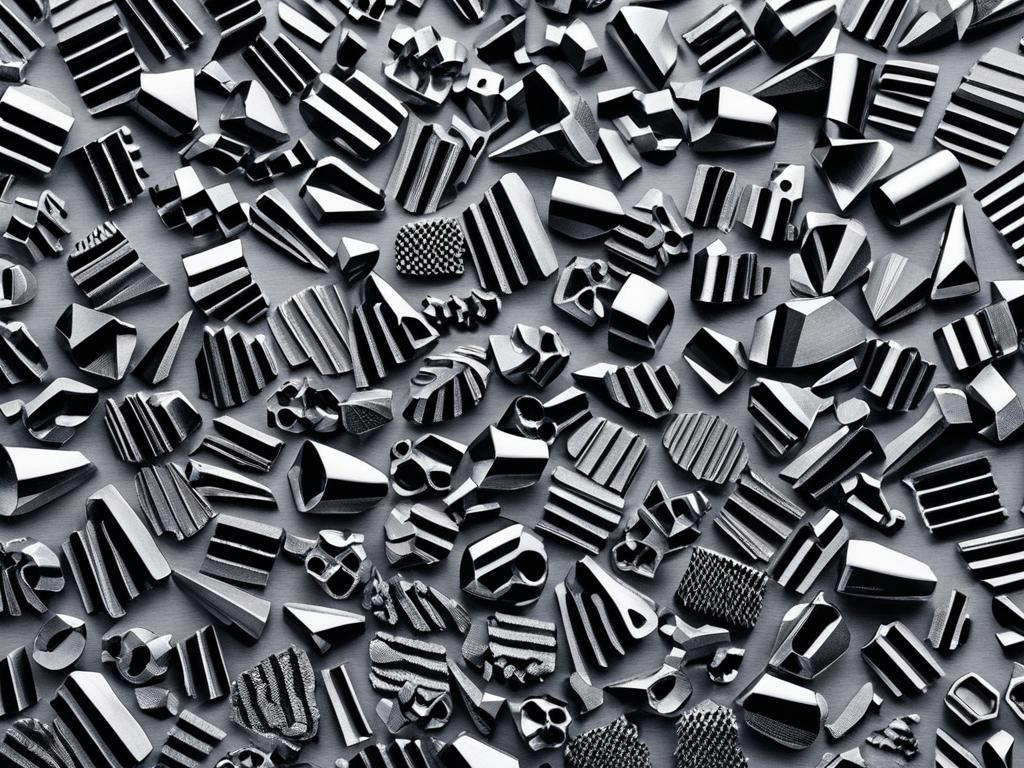Welcome to Precision Machining Pro, where we delve into the intricacies of CNC machining surface finishes. As experts in the field, we understand the importance of choosing the right surface finish for your CNC-machined parts. The surface finish not only enhances the aesthetics but also influences the functional properties and overall quality of the final product.
At Precision Machining Pro, we offer a comprehensive guide to the different types of surface finishes available for CNC machining. Whether you are looking to improve surface roughness, explore surface treatments, or enhance the wear resistance of your parts, we have got you covered. Join us as we dive into the world of CNC machining finishes and discover the best techniques to achieve the desired surface quality.
Key Takeaways:
- Understanding surface finishes is crucial for achieving the desired surface quality in CNC machining.
- Surface finishes not only enhance the aesthetics but also impact the functional properties of CNC-machined parts.
- CNC machining offers a wide range of surface finishing techniques, each with its own benefits and applications.
- Common surface finishes for CNC machining include “as machined,” bead blasting, anodizing, and powder coating.
- The choice of surface finish depends on factors such as surface roughness, corrosion resistance, impact resistance, and visual appearance.
As Machined
When it comes to CNC machining, one of the most common surface finishes is the “as machined” finish. As the name suggests, parts with this finish are taken straight off the CNC machine without any additional treatment or modifications. While this finish offers tight dimensional tolerances, it may have visible tool marks on the surface.
As machined parts have minor tool marks and a standard surface roughness. The surface roughness can be improved by applying a finishing cutting pass. Although these tool marks may be visible, they do not affect the functionality or performance of the part. Instead, they are a natural result of the subtractive nature of CNC machining.
With their tight dimensional tolerances, as machined parts are ideal for applications where precise measurements are critical. However, if the visible tool marks or surface roughness pose cosmetic concerns, additional surface finishing techniques can be employed to achieve the desired aesthetic.
Despite the visible tool marks, as machined parts offer excellent dimensional accuracy and can be produced quickly, making them an efficient option for many CNC machining projects.

Benefits of the As Machined Finish:
- Tight dimensional tolerances
- Quick production turnaround
- Efficient for CNC machining projects
Considerations for the As Machined Finish:
- Visible tool marks on the surface
- Standard surface roughness
- Potential requirement for additional finishing for improved aesthetics
| Finish | Surface Roughness | Dimensional Tolerances | Visible Tool Marks |
|---|---|---|---|
| As Machined | Standard | Tight | Yes |
| Bead Blasting | Variable | Tight | No |
| Anodizing Type II | Variable | Tight | No |
| Anodizing Type III | Variable | Tight | No |
| Powder Coating | Variable | Tight | No |
Bead Blasting for CNC machining surface finishes
Bead blasting is a highly effective surface finishing process that utilizes small glass beads to create a stunning matte finish on CNC-machined parts. This technique not only enhances the visual appearance of the parts but also adds a unique surface texture, making them visually appealing and distinctive.
The bead blasting process involves propelling small glass beads at high velocity onto the surface of the parts. As the glass beads impact the surface, they remove any imperfections, such as tool marks or rough spots, resulting in a smoother and more consistent surface. This process helps to achieve a uniform matte finish that is visually pleasing and sleek.
One of the primary benefits of bead blasting is its impact resistance. By subjecting the parts to the bead blasting process, their surface hardness and durability are significantly improved. This makes them less susceptible to damage from impacts and enhances their overall longevity.
With bead blasting, you have the flexibility to create custom finishes that meet your specific requirements. Adjusting factors such as the size and shape of the glass beads, the blasting pressure, and the duration of the process allows you to achieve different levels of surface texture and finish. This versatility makes bead blasting an ideal choice for industries that prioritize both aesthetics and functionality.
Furthermore, bead blasting can be applied to a wide range of materials, including metals like stainless steel and aluminum, as well as plastics. This makes it a versatile surface finishing technique suitable for various CNC machining applications.
Benefits of Bead Blasting:
- Creates a visually appealing matte finish
- Enhances surface texture and consistency
- Improves impact resistance and durability
- Offers customization options for different finishes
- Applicable to a wide range of materials

| Surface Finish | Visual Appearance | Surface Texture | Impact Resistance |
|---|---|---|---|
| Bead Blasting | Matte Finish | Uniform and textured | Enhanced |
| Anodizing Type II and Type III | Varies depending on the anodizing method | Smooth or textured | Improved |
| Powder Coating | Wide range of colors | Smooth | High |
Anodizing Type II and Type III
Anodizing is a chemical process that creates a corrosion-resistant ceramic layer on the surface of aluminum and titanium parts. This surface treatment significantly enhances the durability and performance of the materials, making them suitable for a wide range of applications.
Type II anodizing involves the creation of a thinner anodic layer, which is around 0.1 to 1.0 mils (2.54 to 25.4 μm) thick. This type of anodizing is often used for decorative purposes, as it can be dyed in various colors, providing an aesthetically pleasing finish. It also enhances the natural corrosion resistance of aluminum and titanium, making them even more durable and long-lasting.
On the other hand, Type III anodizing, also known as hard anodizing, results in a thicker anodic layer, typically ranging from 1.0 to 4.0 mils (25.4 to 101.6 μm) thick. This type of anodizing is primarily applied when a high level of wear resistance is required. The thicker ceramic layer formed during Type III anodizing significantly improves the surface protection of the parts, making them highly resistant to abrasion, corrosion, and other forms of wear.
Both Type II and Type III anodizing processes can be applied to aluminum and titanium parts to enhance their surface properties. Anodizing not only provides corrosion resistance but also improves the overall durability, longevity, and wear resistance of the materials. Moreover, the ability to dye the anodic layer in various colors allows for greater customization and visual appeal.
When it comes to CNC-machined parts, anodizing offers excellent surface protection and wear resistance, making it a popular choice in industries such as aerospace, automotive, electronics, and more. With its ability to strengthen and beautify aluminum and titanium surfaces, anodizing remains a reliable surface finishing technique.

This image provides a visual representation of the anodizing process and the formation of the corrosion-resistant ceramic layer on the surface of aluminum and titanium parts.
Powder Coating
Powder coating is a highly effective and popular surface finishing technique for CNC-machined parts. It involves applying a durable and wear-resistant finish to the surface of the parts, resulting in enhanced protection and aesthetic appeal. The powder coating process begins by electrostatically applying a fine powder made of resin, pigment, and other additives onto the surface of the part, creating an even and consistent coating. The coated parts are then cured in an oven, causing the powder to melt and form a hard, smooth finish.
. The powder coating technique offers several advantages over other surface finishing methods.
- Wear-resistant finish: Powder coating provides a tough and resilient surface that can withstand the challenges of daily use. The cured powder coating creates a protective barrier that guards against scratches, abrasion, and exposure to harsh environmental conditions.
- Impact resistance: CNC-machined parts that undergo powder coating exhibit excellent impact resistance, making them suitable for applications that require durability and strength.
- Wide range of colors: The powder coating process offers a vast selection of colors, allowing for customization and the ability to match specific design requirements. From vibrant hues to subtle shades, there is a wide spectrum to choose from.
- Applicable to any metal: Powder coating is versatile and can be applied to virtually any metal, including steel, aluminum, brass, and more. This makes it a versatile and practical option for a variety of CNC-machined parts.
The aesthetic appeal, durability, and flexibility of powder coating have made it a preferred choice in various industries, including automotive, electronics, furniture, and architecture. Whether it’s adding a sleek and modern look to car parts or providing a protective coating for electronic enclosures, powder coating delivers exceptional results.
In addition to the practical benefits, powder coating is also an environmentally friendly option. It produces minimal waste compared to other finishing techniques and does not release harmful volatile organic compounds (VOCs) into the atmosphere. This makes it a sustainable choice for manufacturers and aligns with the growing demand for eco-friendly solutions.
Overall, powder coating offers a superior combination of durability, impact resistance, aesthetic versatility, and compatibility with a wide range of metals. It enhances the performance, appearance, and longevity of CNC-machined parts, making it a highly desirable surface finishing option.
Final Thoughts for CNC machining surface finishes
In conclusion, surface finishes are essential for optimizing the functionality and enhancing the visual appeal of CNC-machined parts. When it comes to CNC machining, different surface finishes offer specific benefits and meet varying application requirements. By understanding the characteristics and advantages of each type of surface finish, you can confidently select the most suitable option for your CNC machining projects.
From the initial machined state, where parts come off the CNC machine with minor tool marks and standard surface roughness, to bead blasting, which creates a matte finish and improves the visual appearance of parts, there are numerous choices available. Anodizing, whether Type II for decorative purposes or Type III for enhanced wear resistance, provides corrosion protection and can be dyed in various colors. Lastly, powder coating offers a durable, wear-resistant finish with a wide selection of colors to choose from, ensuring both protection and aesthetic appeal.
As precision machining professionals, we understand the importance of selecting the right surface finish for CNC-machined parts. Whether you prioritize functionality, aesthetics, or both, the surface finish you choose can make a significant difference in the performance and overall quality of your parts. So, when embarking on your next CNC machining project, consider the various surface finishing options available to achieve the desired results.
FAQ
What is CNC machining?
CNC machining is a subtractive manufacturing process that produces parts with tight tolerances and fine detail from metals and plastics.
Why is surface finishing important in CNC machining?
Surface finishing plays a crucial role in improving surface roughness, cosmetic appearance, and wear resistance of CNC-machined parts.
What is as machined?
As machined refers to the surface finish of CNC-machined parts straight off the machine, with minor tool marks and a standard surface roughness.
What is bead blasting?
Bead blasting is a process that uses small glass beads to create a matte finish on CNC-machined parts, improving their visual appearance and creating a uniform surface texture.
What is anodizing?
Anodizing is a chemical process that creates a corrosion-resistant ceramic layer on the surface of aluminum and titanium parts.
What are the different types of anodizing?
There are two main types of anodizing. Type II anodizing produces a thinner layer suitable for decorative purposes, while Type III anodizing creates a thicker, more wear-resistant layer suitable for functional applications.
What is powder coating?
Powder coating is a process that applies a durable and wear-resistant finish to the surface of CNC-machined parts, offering higher impact resistance and coming in a wide range of colors. It can be applied to any metal.
Source Links
- https://www.hubs.com/knowledge-base/surface-finishes-cnc-machinings/
- https://www.rapiddirect.com/knowledge-base/surface-finishes-for-cnc-machining
- https://www.fictiv.com/articles/the-ultimate-guide-to-cnc-finishing-options-how-to-choose-the-right-one-for-your-application




